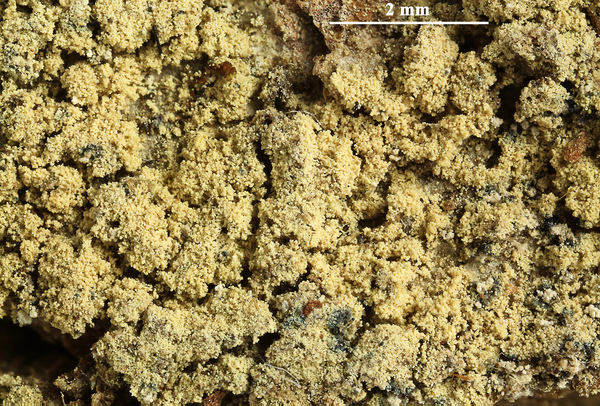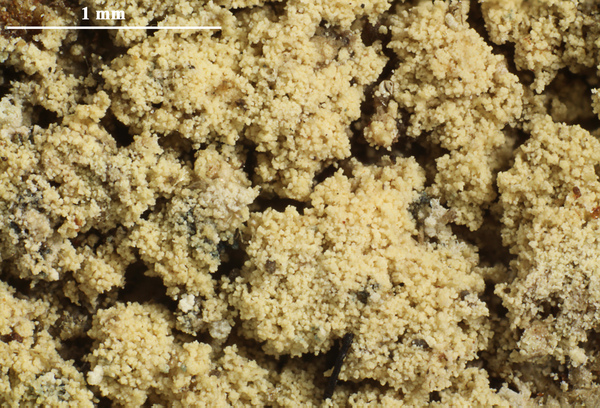Biatora pontica Printzen & Tønsberg
Bibl. Lichenol., 86: 40, 2003.
Synonyms:
Description: Thallus crustose, episubstratic, at first thin and areolate, the areoles (in non-sorediate parts) up to 1.2 mm wide, with initially punctiform, then confluent, yellowish- or green soralia which in mature specimens may cover almost the whole thallus surface, giving it a subleprose appearance; soredia farinose, 15-35 µm. Apothecia biatorine, 0.5-0.7 mm across, with a flat to moderately convex, dark greyish-ochre to brownish-grey disc and a soon excluded proper margin. Proper exciple colourless distally, rarely pale ochre or olive proximally, 30-60 μm wide laterally, 10-60(-85) μm wide at base, of radiating hyphae; epithecium colourless or pale ochre to olive, 5-10 μm high; hymenium (30-)40-50 μm high, colourless to patchily pale olive, often with purple granules; paraphyses simple or sparingly branched, the apical cells rather swollen; subhymenium distinct, 40-75(-90) μm high; hypothecium colourless or pale ochre with patches of blue or purple pigment, 40-100 μm high. Asci 8-spored, clavate, with a K/I+ blue apical dome penetrated by a narrow, K/I– apical cushion surrounded by a narrow, deeply K/I+ blue zone, the wall K/I- but surrounded by an I+ red-brown, K/I+ blue outer layer, the ocular chamber relatively small, Biatora-type. Ascospores 0(-3)-septate, hyaline, narrowly ellipsoid to bacilliform, (7-)10-16(-23) × 2-4(-4.5) µm. Photobiont chlorococcoid. Spot tests: soralia K-, C+ orange KC+ orange, P-; subhymenium K+ intensely lemon yellow, turning ochraceous after some minutes, N+ greenish yellow. Chemistry: thiophanic acid (major), asemone, and an unidentified diagnostic substance (Pontica-unknown), sometimes with minor or trace amounts of other xanthones. Apothecia with a blue pigment (Pontica-blue) in hypothecium, subhymenium, and (rarely) hymenium and epithecium; sometimes an additional red pigment (Pontica-red) is present in the hypothecium and hymenium.
Growth form: Crustose
Substrata: bark
Photobiont: green algae other than Trentepohlia
Reproductive strategy: mainly asexual, by soredia, or soredia-like structures (e.g. blastidia)
Most common in areas with a humid-warm climate (e.g. most of Tyrrenian Italy)
Commonnes-rarity: (info)
Alpine belt: absent
Subalpine belt: absent
Montane belt: very rare
Dry submediterranean belt: absent
Humid submediterranean belt: absent
Padanian area: absent
pH of the substrata:
1 2 3 4 5
Solar irradiation:
1 2 3 4 5
Aridity:
1 2 3 4 5
Eutrophication:
1 2 3 4 5
Poleotolerance:
0 1 2 3
Altitudinal distribution:
1 2 3 4 5 6
Rarity
absent
extremely rare
very rare
rare
rather rare
rather common
common
very common
extremely common
Loading data...
Occurrence data
Predictive map
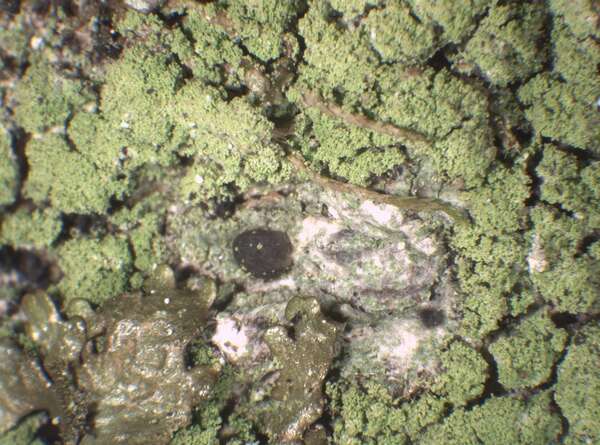
P.L. Nimis; Owner: Department of Life Sciences, University of Trieste
Herbarium: TSB (35440)
2002/12/03
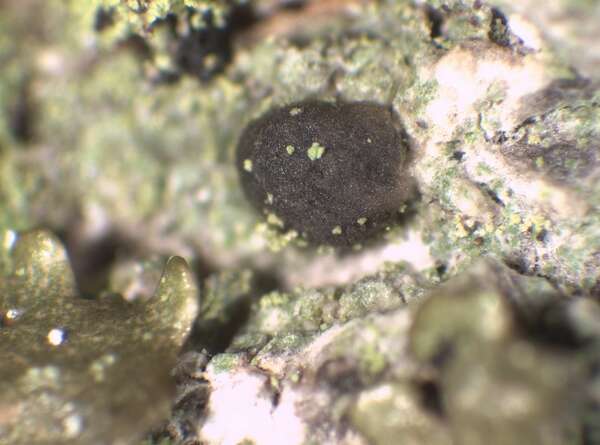
P.L. Nimis; Owner: Department of Life Sciences, University of Trieste
Herbarium: TSB (35440)
2002/12/03
apothecium
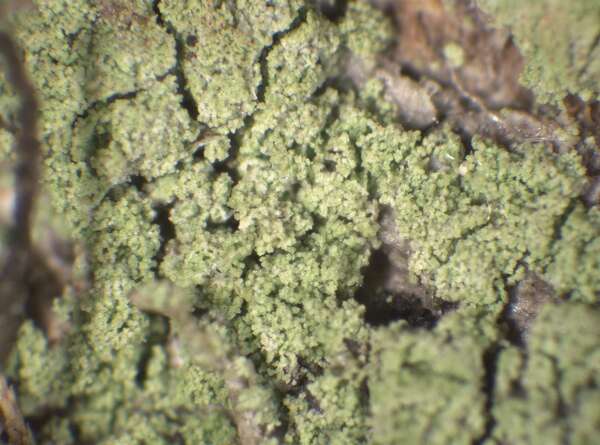
P.L. Nimis; Owner: Department of Life Sciences, University of Trieste
Herbarium: TSB (35440)
2002/12/03
sterile thallus
Growth form: Crustose
Substrata: bark
Photobiont: green algae other than Trentepohlia
Reproductive strategy: mainly asexual, by soredia, or soredia-like structures (e.g. blastidia)
Most common in areas with a humid-warm climate (e.g. most of Tyrrenian Italy)
Commonnes-rarity: (info)
Alpine belt: absent
Subalpine belt: absent
Montane belt: very rare
Dry submediterranean belt: absent
Humid submediterranean belt: absent
Padanian area: absent
pH of the substrata:
| 1 | 2 | 3 | 4 | 5 |
Solar irradiation:
| 1 | 2 | 3 | 4 | 5 |
Aridity:
| 1 | 2 | 3 | 4 | 5 |
Eutrophication:
| 1 | 2 | 3 | 4 | 5 |
Poleotolerance:
| 0 | 1 | 2 | 3 |
Altitudinal distribution:
| 1 | 2 | 3 | 4 | 5 | 6 |
Rarity
absent
extremely rare
very rare
rare
rather rare
rather common
common
very common
extremely common
Loading data...
Occurrence data
Predictive map

P.L. Nimis; Owner: Department of Life Sciences, University of Trieste
Herbarium: TSB (35440)
2002/12/03

P.L. Nimis; Owner: Department of Life Sciences, University of Trieste
Herbarium: TSB (35440)
2002/12/03
apothecium



